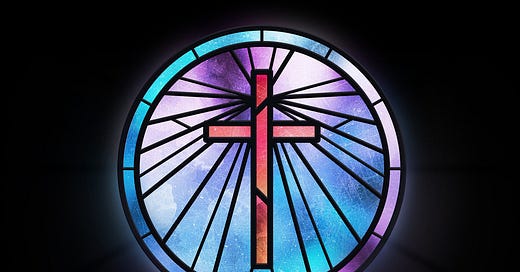Members of my Bible studies at Fairfax Presbyterian Church often run into contradictions when studying the four Gospels. The cleansing of the temple, for example — when Jesus expels the merchants and the money changers — occurs near the end of Matthew, Mark, and Luke, while it takes place near the beginning of John.
Did John get the timing wrong? Or did he describe an event that was different than the one included in the other three Gospels? Readers who want every story of Jesus to align perfectly in all four Gospels are bound to be frustrated.
I often say how thankful I am that Christians have four different accounts of the life, death, and resurrection of Jesus. Each has a distinct vantage point, and each makes unique contributions to our understanding of the significance of what Jesus said and did. If you have ever been to a family reunion, you know that the experience is enriched by the different stories that are told by a variety of relatives. If only one person gave an account of family history, you would miss important personal memories and perspectives.
In an essay on forgiveness, novelist Ayana Mathis writes that a “multitude of vantage points, even contradictions, are not obstacles to be overcome in order to arrive at a single, distilled truth: There is wisdom in the accumulation and juxtaposition of biblical narratives. They are choral and kinetic, not fixed; they invite reinterpretation and re-engagement.”
Members of Bible studies in Purple Churches, including people who are both politically Red and politically Blue, should not expect every verse of the Gospels to be perfectly clear. Instead, they should discuss a “multitude of vantage points” and discover God’s message to them through “reinterpretation and re-engagement.” Truly, the Gospels help us to see Jesus “four ways.”
In her essay in The New York Times, Mathis quotes theologian Mark Jordan, who says that the Gospels “are contradictory stories studded with paradoxical aphorisms. Every theology that is not written as a life told four ways already departs from the most authoritative model of Christian writing.” He’s right. The four Gospels are our authority. We are not like Muslims, who have one unique revelation from God in the Quran. Built into our authoritative religious text is a variety of perspectives.
This diversity is found throughout the Bible, not just in the Gospels, so I believe that Christian communities should always embrace a range of perspective. In my book The Bible’s Greatest Hits: Top Sixty-Six Passages from Genesis to Revelation, I write that God’s truth is spoken in a variety of voices, and sometimes they contradict each other. The exclusiveness of the Book of Ezra, with a denunciation of marriages between Israelites and other tribes, is at odds with the more inclusive message of the Book of Ruth, in which a Moabite woman becomes the great-grandmother of King David.
In the New Testament, Paul’s assertion that Abraham’s “faith was reckoned to him as righteousness” (Romans 4:22) stands in creative tension with the statement of James that “faith by itself, if it has no works, is dead” (James 2:17).
The power of Scripture is that it allows the truth of God to be revealed in different ways, and does not require us to provide simple answers to complex questions. In the life of the church, we know that it is important to maintain particular practices and traditions (exclusiveness) at the very same time that we open our doors to people of different races and cultures (inclusiveness).
We can hold to the belief that we are saved by the grace of God through our faith in Christ, while also doing good work as the hands and feet of Jesus in the world today. David’s sexual abuse of Bathsheba is a cautionary tale in 2 Samuel, but this story does not mean that God is anti-sex, as the erotic love poem of the Song of Solomon makes abundantly clear.
The truth of Scripture is a multi-faceted gem, and I hope that Bible studies and sermons in Purple Churches will take the time to examine all facets. Our understanding of God’s Word is enriched by multiple perspectives, beginning with the “four ways” that the Gospels present to us the life, death, and resurrection of Jesus.




